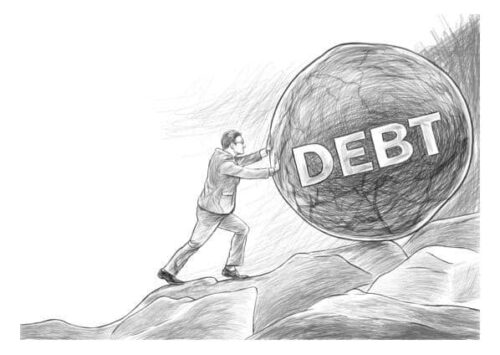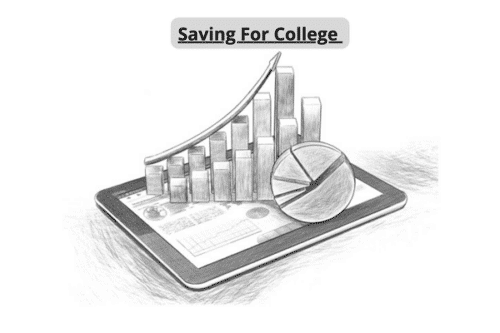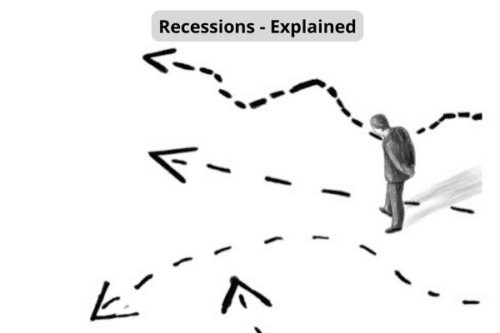Four Horsemen of the investing apocalypse
12 July 2022
Hey, The Investor’s Podcast Network Community!
Welcome back to We Study Markets!
Yesterday was an ugly day in markets. We’ll soon know if last week’s bounce was just a bear market rally, or a turn in sentiment.
We aren’t holding our breath.
Today, we’ll be discussing the real causes of recessions, the four horsemen of the investment apocalypse, warning signs in the housing market, why now is a great time (for Americans) to book a trip to Europe, and much more, in just 4.5 minutes to read.
Read on 📖
Get smarter about valuing businesses in just a few minutes each week.
Get the weekly email that makes understanding intrinsic value
easy and enjoyable, for free.
In The News
💬 Is Buffett ditching Chinese electric car maker BYD? (FT)
Explained:
- Traders are speculating that Berkshire Hathaway may be looking to exit a position held since 2008 in BYD, after a stake roughly the size of Berkshire’s appeared in the Hong Kong stock exchange’s clearing system.
- This could indicate an intention to sell these shares, if they are in fact Berkshire’s, who currently holds a 7% stake in the company worth around $7.7 billon. Such a high profile exit is sure to make investors uneasy, so traders who noticed the registering of 225 million shares (roughly how many Buffett owns) sought to get ahead of the news by selling, which pushed BYD’s stock down 12%.
What to know:
- Since their initial investment, Berkshire has earned an approximate 33x return, and with tensions between the U.S. and China boiling over technological competition, it’s not unimaginable that Buffett would want to lock in those gains by selling out of BYD. BYD has said though they have not yet received any notices that a major shareholder was changing its ownership position, which would be required for Berkshire to do under the Hong Kong exchange’s rules.
🏠 Homebuyers are cancelling deals at highest rates since the pandemic (CNBC)
Explained:
- Cancellations of purchase agreements on existing homes were just under 15% of all signed contracts in June. This is the highest share since home buying paused briefly when the Covid pandemic first hit. Homebuilders are also experiencing increased cancellation rates, as 9.3% of buyers ended contracts in May compared to just 6.6% a year ago.
What to know:
- The increase in cancellations is hardly surprising, as mortgage rates and inflation have both surged and are cause for concern for homebuyers. Many are struggling to get comfortable with higher payments or are expecting home prices to decline. Rates started the year at 3% and briefly shot above 6% in June. With a $250,000 30-year mortgage, at a 3% rate your payment would be $1,054 per month, but with rates at 6%, the payment rises to $1,498 (derived using a basic mortgage calculator)
- Currently, rates have been ranging around 5.75%. Bidding wars for homes have slowed, and buyers now have more room to negotiate. Inspections and appraisals were often waived in hopes of having an offer accepted. Now, buyers are keeping these contingencies to allow for flexibility to call off the deal if necessary. We can expect to see these cancellation rates to trend higher if the Fed continues to tighten to curb inflation.
![]() Euro and the dollar almost hit parity for the first time in twenty years (CNN)
Euro and the dollar almost hit parity for the first time in twenty years (CNN)
Explained:
- The euro is down about 12% this year versus the dollar, as yesterday the exchange rate between the two currencies came within less than half a cent of being 1:1. The European Central Bank (ECB) has been slower to raise rates in response to inflation than the Federal Reserve in the U.S, which has contributed to the euro’s decline, as more investors would generally rather hold a peer currency they can earn higher interest on.
What to know:
- For Americans, If your summer break includes a trip to Europe, you’ll be receiving a nice discount on some of your expenses while there, as this lower exchange rate will boost your spending power (you’ll be able to receive more euros in exchange for your dollars than you would have just a few months ago).
- For markets, this is just one of many illustrations of how interlinked the global financial system is. For central banks everywhere, the challenge they must now consider is to either raise interest rates in accordance with the Federal Reserve and risk inducing a domestic recession, or watch their currencies decline against the most important currency in the world (the U.S. dollar) which could also cause a recession.
- The whole thing is a Catch-22, and we discussed central bankers’ dilemma in more detail last Friday. For an explanation of what recessions actually are and why they happen, scroll down to our Dive Deeper section below 👇
Sponsored By
How do you make sure that you are investing with a “good” operator?
Dan Handford and his wife are currently invested in 54 different passive real estate syndications with 16 different operators in 10,000+ doors.
They use this exact list when deciding whether or not to invest with a particular group. Get access to the “7 Red Flags for Passive Real Estate Investing” to be confident in your next investment!
Dive Deeper: What Causes Recessions?
There’s a lot of talk these days about whether the U.S., and much of the world, is in or about to enter a recession. The ins-and-outs of the business cycle are not always common knowledge, and in particular, we like the way that Cullen Roche thinks about it.
The short answer is, that technically speaking, a recession is a period of, at minimum, two consecutive quarters of negative GDP growth. So a recession is a downturn in economic activity, meaning people lose their jobs, salaries get cut, corporate budgets are tightened, bankruptcies and defaults occur, and generally, we collectively product and consume less.
But why?
Why can’t we keep the economy in a steady state of reasonable, or at least flat growth?
Roche says, “at its macro level, the economy is really just made up of a bunch of balance sheets and income statements.”
He continues by explaining, “based on this understanding…recessions must occur due to shocks in these income statements and balance sheets. If we could construct an economy where balance sheets and income statements grew at perfectly stable and steady rates, then we wouldn’t have recessions.”
These accounting terms seem so micro, but of course, the ‘economy’ is just a crude encapsulation of the collective behaviors of many individual actors and organizations.
Though the web of relationships between these individuals and firms is complex, specific events can trigger flows throughout the economy and impact everything they touch along the way.
Another way to think of this is that every asset is someone else’s liability.
For example, if you borrow money from a bank to purchase a house, your mortgage is now a liability that you must repay, but for the bank, the mortgage is an asset that reflects your expected payment.
If your personal income statement (your salary), declines, perhaps from being laid off, then now you may be no longer able to pay back your mortgage, causing a default. This ripple effect then impairs the bank’s balance sheet, since you can no longer pay back the mortgage which they had marked as an asset.
If this happens at scale, then the bank’s solvency might become questionable and force it to cut back on lending, which means some businesses will go bankrupt without access to bank loans, and those workers will get laid off, triggering more people to default on their mortgages. And the cycle continues on and on, spreading across banks’, companies’, and individuals’ balance sheets.

So what?
This is a simple example, but as you can see, in a recession negative events like defaults compound on each other, so it’s quite important to recognize when the economy is turning down and take measures to prepare or counteract it.
But we never answered what actually initiates the feedback loop that precipitates a recession.
Roche responds to this saying, “You can have demand-side shocks like a credit crunch, higher interest rates, falling real wages, etc. You can (also) have supply-side shocks like spiking oil prices or other production shocks. It really depends on the specific environment and the various macro drivers that lead to balance sheet and income statement shocks.”
Demand-side shocks represent events that curb our ability to spend. If our spending decreases, then someone else’s income is also decreasing (you’re no longer paying for a good/service they provided). If, for example, interest rates rise quickly, spending in the economy will typically decline over time, as higher interest expenses on mortgages, credit cards, business loans, etc. eat into savings.
Supply-side shocks are events that impact the economy’s ability to produce enough of the goods and services that people would like to use. In the past two years, we’ve seen a few of these shocks, stemming from both Covid-19 lockdowns and, more recently, the Russian invasion of Ukraine. When factories in China are locked down due to Covid, this reduces their production (supply), meaning the same goods we’ve relied on for years are now less accessible, and prices for these finite supplies are bid up.
Ukraine is a large exporter of wheat, so among other shocks, this is a supply-side shock that may prove particularly consequential, as the world economy’s ability to produce the wheat used in many food products is now severely limited.
The takeaway?
You could say that today we’re experiencing both demand-side and supply-side shocks, as the Federal Reserve rapidly raises interest rates, at the same time of huge supply shortages, in part made worse by the war in Ukraine and the pandemic.
It’s not surprising then that investors are bracing for a recession.
Are you expecting a recession? And if so, how are you preparing for it?
Reply to this email to let us know your thoughts.
If you like Cullen Roche, check out our most recent interview with him on We Study Billionaires.
Quote of the Day
“The 4 horsemen of the investment apocalypse are fear, greed, hope, and ignorance”
Meaning
While many think of investing like a solvable math problem that can be completed with the right tools and data, even great ‘quant’ investors (a strategy based on complex financial models and data-driven quantitative analysis) like Jim O’Shaughnessy have told us that this isn’t the case.
Financial markets are complex, and are in part, driven by human behavioral biases, such as the four described above. You’ll note three of these four horsemen of the apocalypse are emotions.
Fear serves to drive markets to their bottom, as investors begin focusing more on possibilities rather than probabilities. For example, concerns over the collapse of the financial system become overweighted relative to their actual likelihood of occurring which fuels panic selling.
On the other hand, greed and hope serve to drive markets to irrational exuberance, as investor bets become increasingly unrealistic in the chase of short-term profits (anyone lose money on Dogecoin? 😉).
Lastly, ignorance can serve to both propel markets upwards or drag them downwards. In simple terms, you can’t know what you do not know.
Ignorant investors may pile into bets and drive asset prices up without understanding the risks underpinning them. Even sophisticated investors can lose out to collective ignorance, how many seemingly savvy market participants got burned by the happenings of the 2008 financial crisis?
When investors are collectively fearful, greedy, hopeful, or ignorant about what they own, it’s time to either start looking for the opportunities or hedging your risks.
For more Jim O’Shaughnessy, check out Trey Lockerbie’s interview with Jim on We Study Billionaires.
What is a 529 plan?

529 plans are excellent tool to facilitate education and college savings in the U.S., and every state offers its own plan.
While you can participate in any state’s 529 plan, the majority will provide state income tax deductions if you participate in your own state’s plan.
What to know
Gains and withdrawals from 529 accounts made towards qualifying education expenses, such as tuition or books, are tax-free.
In parent-owned 529 plans, any family member can contribute towards the children’s education. While there are maximum cumulative contribution limits, they tend to be high, so most will want to focus in the short-term more on not exceeding the annual gifting limit.
This isn’t a major issue, but it will begin to affect your lifetime estate and gift tax exemption for gifts over $15,000 in a given year ($30,000 for a couple) per child. There are workarounds to gifting more than this in a year on a lump sum basis though.
Like a target-date retirement fund, you may be able to select an age-based portfolio appropriate for your child’s age or select basic aggressive, moderate, or conservative strategies.
You’ll typically want to be more aggressive early on (greater allocation to stocks), and as expected college expenses approach, become more conservative.
If you or a loved one are hoping to get ahead on these costs, and even avoid student loans, 529 plans are a necessary tool.
See You Next Time!
That’s it for today on We Study Markets!
If you enjoyed the newsletter, keep an eye on your inbox for them on weekdays around 12 pm EST, and if you have any feedback or topics you’d like us to discuss, simply respond to this email.
We’ll see you back here again tomorrow – same place, same time 😉

P.S The Investor’s Podcast Network is excited to launch a subreddit devoted to our fans in discussing financial markets, stock picks, questions for our hosts, and much more! Join our subreddit r/TheInvestorsPodcast today!





